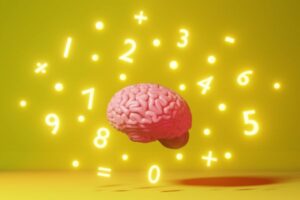In the fast-paced and information-driven world we live in today, the ability to process, retain, and effectively utilize knowledge is more critical than ever. As individuals strive to excel in academics, work, and personal pursuits, innovative techniques that enhance learning, creativity, and problem-solving have become highly sought after. Among these techniques, mind mapping has emerged as a powerful and versatile tool, revered for its ability to tap into the natural way our brains process information and unleash our cognitive potential.
At its core, mind mapping is a visual thinking technique that mirrors the non-linear way our minds associate ideas and concepts. With a central theme or topic serving as the focal point, mind maps branch out to interconnect related subtopics and ideas, creating a dynamic and interconnected web of information. This graphical representation not only aids in organizing thoughts but also stimulates creativity, promotes information retention, and facilitates effective decision-making.
In this article, we will delve into the multitude of benefits that mind mapping offers and provide a comprehensive guide on how to start creating your own mind maps. From understanding the neurological basis of mind mapping to exploring its applications in various aspects of life, we will uncover the transformative power of this technique. Whether you are a student looking to enhance your learning capabilities, a professional seeking to unlock your creative potential, or an individual striving for better organization and planning, mastering the art of mind mapping can be a game-changer in your personal and professional growth. So, let us embark on this journey of discovery, as we unravel the mysteries of mind mapping and harness its immense potential for enriching our lives.
Understanding the Power of Mind Mapping
At its core, mind mapping is a graphical representation of thoughts and ideas, with a central concept or topic serving as the focal point. Branching out from this central node are interconnected subtopics, forming a web-like structure that mirrors the non-linear way our minds associate information. This approach not only encourages creativity but also aids in information retention and comprehension.
One of the key benefits of mind mapping is its ability to engage both hemispheres of the brain – the analytical left hemisphere and the creative right hemisphere. By tapping into this bilateral mode of thinking, mind maps become a holistic tool for learning and problem-solving. Furthermore, mind maps provide a visual overview of complex information, making it easier to identify patterns, make connections, and generate new insights.
Boosting Creativity and Idea Generation
Mind mapping serves as a catalyst for creativity, making it an invaluable tool for writers, artists, entrepreneurs, and anyone seeking to generate fresh ideas. As thoughts flow organically onto the mind map canvas, individuals can explore different perspectives and potential solutions to challenges. The freedom to connect seemingly unrelated concepts often leads to “aha” moments, where innovative and groundbreaking ideas emerge.
Moreover, mind mapping enables individuals to capture fleeting thoughts and inspirations that may get lost if not recorded immediately. By giving these ideas a tangible form, mind maps create a visual repository of creative sparks, which can be revisited and expanded upon in the future. This practice fosters a culture of continuous creativity and prevents the loss of valuable insights.
Enhancing Learning and Information Retention
Mind mapping is a potent learning tool that complements the brain’s natural way of assimilating information. By organizing concepts in a visually interconnected manner, mind maps create a coherent and memorable representation of knowledge. When studying complex subjects, learners can use mind maps to break down large chunks of information into smaller, manageable parts, making it easier to grasp and retain the content.
Additionally, the use of colors, images, and keywords in mind maps reinforces memory retention. Visual elements stimulate the brain and evoke emotions, which, in turn, enhance the encoding of information into long-term memory. Whether used for note-taking, summarizing lectures, or outlining textbooks, mind maps empower students to become active learners and master the material more effectively.
Facilitating Decision Making and Planning
In the realm of decision making and planning, mind mapping proves to be a valuable asset. When faced with complex choices or projects, creating a mind map allows individuals to explore various possibilities, assess pros and cons, and evaluate potential outcomes. The visual representation clarifies the interrelationships between different factors, enabling individuals to make informed and strategic decisions.
Furthermore, mind maps serve as a structured framework for planning projects, setting goals, and defining action steps. The hierarchical nature of mind maps ensures that every aspect of a plan is organized and interconnected, leaving no critical element overlooked. As a result, individuals can approach their endeavors with a clear and well-defined roadmap, increasing their chances of success.
How to Start Mind Mapping
Starting with mind mapping is a straightforward process that requires only a pen and paper or a digital mind mapping tool. Here’s a step-by-step guide to creating your first mind map:
Choose a Central Topic: Identify the central theme, idea, or problem you want to explore or represent visually. Write it down in the center of your canvas or digital mind map.
Add Subtopics: From the central node, branch out and add related subtopics. Each subtopic should be a keyword or short phrase that captures a specific aspect or element related to the central topic.
Create Branches: Connect the subtopics to the central node using lines or branches. Use different colors and thicknesses to distinguish between different categories or levels of information.
Expand and Explore: As you add subtopics, let your mind flow freely and make connections between related concepts. Don’t be afraid to add new branches or explore tangents – this is where the magic of creativity happens.
Use Visual Elements: Enhance your mind map with images, icons, and symbols that represent key ideas. Visual elements add clarity and engagement to your mind map.
Review and Refine: Take a step back and review your mind map. Make adjustments, refine the connections, and ensure that the structure makes sense to you.
Iterate and Build: Mind mapping is an iterative process. As you learn more or generate new ideas, continue building and expanding your mind map to keep it up-to-date and relevant.
Conclusion
In conclusion, the art of mind mapping is a captivating and transformative approach that empowers individuals to unlock the full potential of their minds. With its visually dynamic and interconnected structure, mind mapping taps into the brain’s innate capacity for creativity, organization, and information processing. Throughout this article, we have explored the numerous benefits that mind mapping offers, from enhancing learning and boosting creativity to facilitating decision-making and strategic planning.
One of the primary advantages of mind mapping lies in its ability to engage both hemispheres of the brain, fostering a harmonious blend of analytical thinking and creative ideation. As individuals immerse themselves in the process of mind mapping, they embark on a journey of self-discovery, uncovering hidden connections between seemingly unrelated ideas and generating innovative solutions to complex problems. The free-flowing nature of mind maps encourages a non-linear approach to thinking, empowering individuals to think “outside the box” and break away from conventional thought patterns.
Furthermore, mind mapping serves as a catalyst for enhanced memory retention and comprehension. By visualizing concepts and creating associations between ideas, mind maps create a cohesive representation of knowledge, making it easier to absorb and recall information. Whether used for note-taking, summarizing lectures, or organizing study materials, mind maps equip learners with an active and efficient approach to mastering subjects.
In addition to its academic benefits, mind mapping finds its application in various aspects of professional and personal life. Entrepreneurs and business leaders leverage mind maps to strategize, plan projects, and explore new market opportunities. Creatives harness the power of mind mapping to generate fresh ideas, overcome creative blocks, and map out artistic projects. From goal setting to time management, mind mapping serves as a comprehensive tool for productivity and organization.
As you embark on your mind mapping journey, remember that there are no rigid rules or limitations. Mind maps are as unique as the individuals who create them. Embrace the freedom to experiment with colors, images, and symbols that resonate with you. Allow your mind to explore and connect ideas organically, giving rise to new insights and perspectives.
The benefits of mind mapping extend far beyond the act of creating a visual representation of ideas; they lay the groundwork for a transformative shift in thinking and problem-solving. By nurturing a habit of mind mapping, individuals cultivate a mindset that thrives on creativity, adaptability, and clarity of thought.
So, whether you’re a student aiming to excel in your studies, a professional seeking innovative solutions, or an individual striving for personal growth and organization, let the art of mind mapping become an integral part of your journey. Embrace the beauty of visual thinking, and watch as the branches of your mind map intertwine, revealing the boundless potential of your thoughts and ideas. In the ever-evolving landscape of knowledge and innovation, let mind mapping be your compass, guiding you toward a future enriched by creativity, efficiency, and profound understanding.



